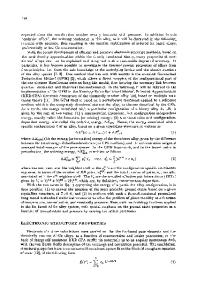Effect of manganese on the stability of austenite in Fe-Cr-Ni alloys
- PDF / 455,140 Bytes
- 6 Pages / 613 x 788.28 pts Page_size
- 24 Downloads / 285 Views
I.
INTRODUCTION
IN 200-type stainless steels, Mn and N are used in conjunction to reduce the content of expensive Ni to levels lower than those in the corresponding types in 300-series stainless steels. For example, the Ni, Mn, and N contents of the 201-type stainless steel are about 4.5, 6.5, and 0.25 wt pct, respectively, in comparison to 7.0 wt pct Ni in the 301 type. Typical annealing temperatures for wrought austenitic stainless steels are in the range of 950 ~ to 1150 ~ The steel is usually cooled rapidly from the annealing temperature. The sluggish nature of the austenite-to-ferrite transformation ensures that the equilibrium attained at the annealing temperature is essentially retained during cooling. These circumstances enable the room-temperature state to be deduced from the annealing temperature used. In this article, the austenite (3')-ferrite (a) equilibrium in the Fe-Cr-Mn-Ni quaternary system has been computed at typical annealing temperatures, using recent thermodynamic interaction parameters. II. THE THERMODYNAMIC MODELS AND PARAMETERS All the four elements constituting this quaternary system have significant magnetic properties. Detailed descriptions of the magnetic moments and the magnetic transition temperatures as a function of alloy composition are available. Among the substitutional solid-solution models that account separately for the excess free energy due to magnetic ordering, tj'181 the model of Hillert and Jarl tu is used in this investigation. The chemical and magnetic interaction parameters for the binary combinations are described as Redlich-Kister polynomials. Table I lists the parameters used in this investigation. References to the data sources are given.t2-91 Recent descriptions of the Fe-Cr-Ni system by Hillert and Qiu 19] and of the Fe-Cr-Mn system by Hari Kumar 1~~ and Lee 161 V. RAGHAVAN, Professor, is with the Indian Institute of Technology, New Delhi, 1 l0 016 India. Manuscript submitted October 20, 1993.
METALLURGICAL AND MATERIALS TRANSACTIONS A
have yielded ternary interaction parameters (Table I). In the Fe-Cr-Mn system, a ternary interaction parameter is necessary to give satisfactory agreement with the experimental results of Kirchner and Uhrenius t~u on the austenite-ferrite equilibrium. The molar Gibbs energy of the a or 3' phase is given by G,, = XFr ~
+ Xcr ~
+ XMn ~
+ XNi ~
+ RT(XF~ In XFe + Xcr In Xcr + XM. In XM. + XNi In XNi) "q- XFeXcrZFe,C r + XFeXMnZFe,Mn + XFeXNiLFe,N i -~- XcrSMnZcr,M n -I- XcrXNiZcr,N i d- XMnXNiLMn,Ni -~- XcrXFeXMnLCr,Fe,Mn -]- XcrXFeXNiZCr,Fe,Ni "l- m~
where X is atomic fraction, T is temperature in K, ~ is the Gibbs energy of a pure component, L is the chemical interaction parameter, and m~ is the contribution to the free energy due to magnetic ordering. For a full description of m~ see Table I. The ternary interaction parameter is defined as follows: [91 LCr,Fe,M n = XcrLcr,Fe,Mn Cr Fe Mn -[- XFeZCr,Fe,Mn "-[- XMnZCr,Fe,Mn
The nonlinear equations obtained by equating the chemical potentials of the components in the two phase











